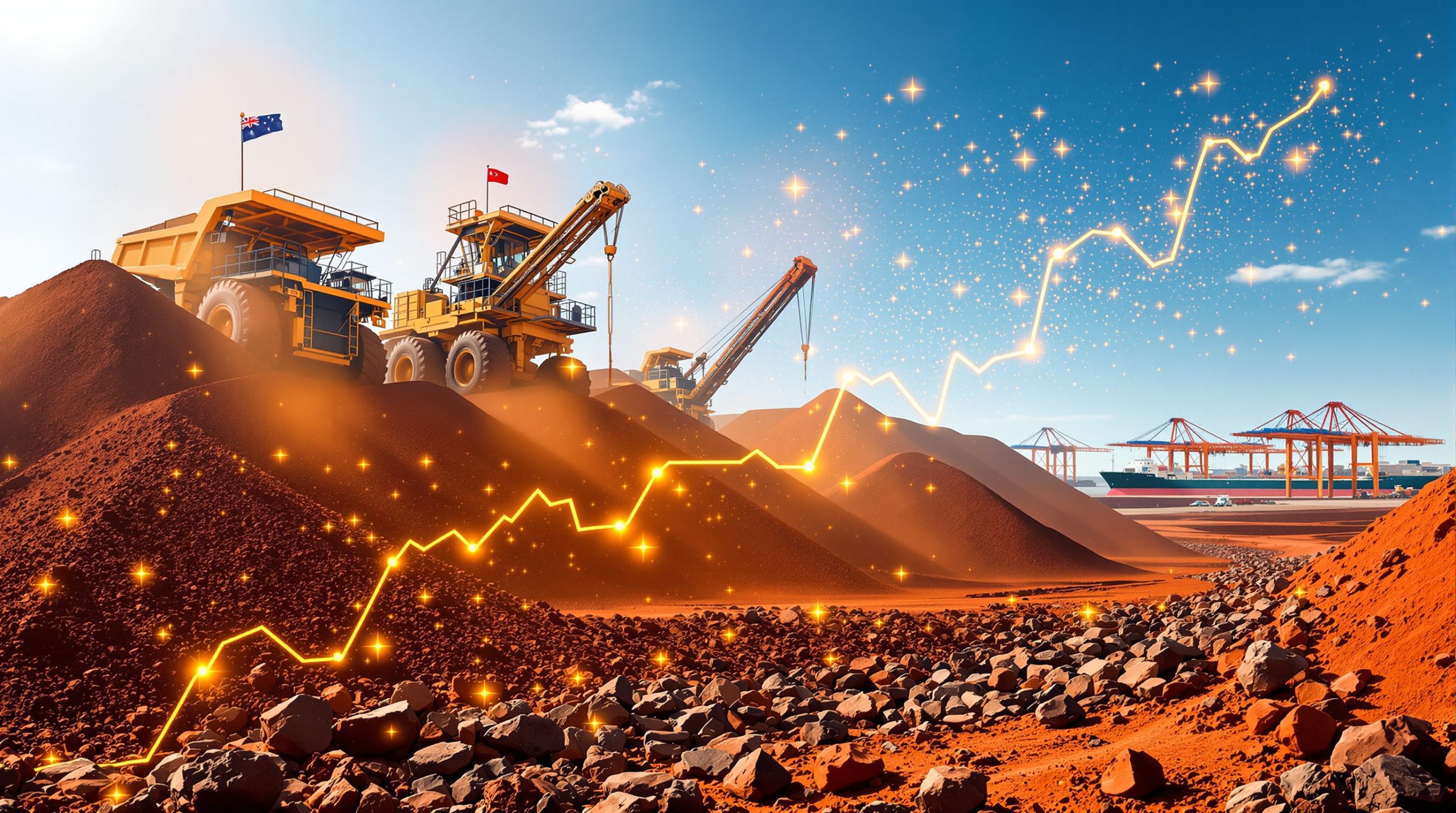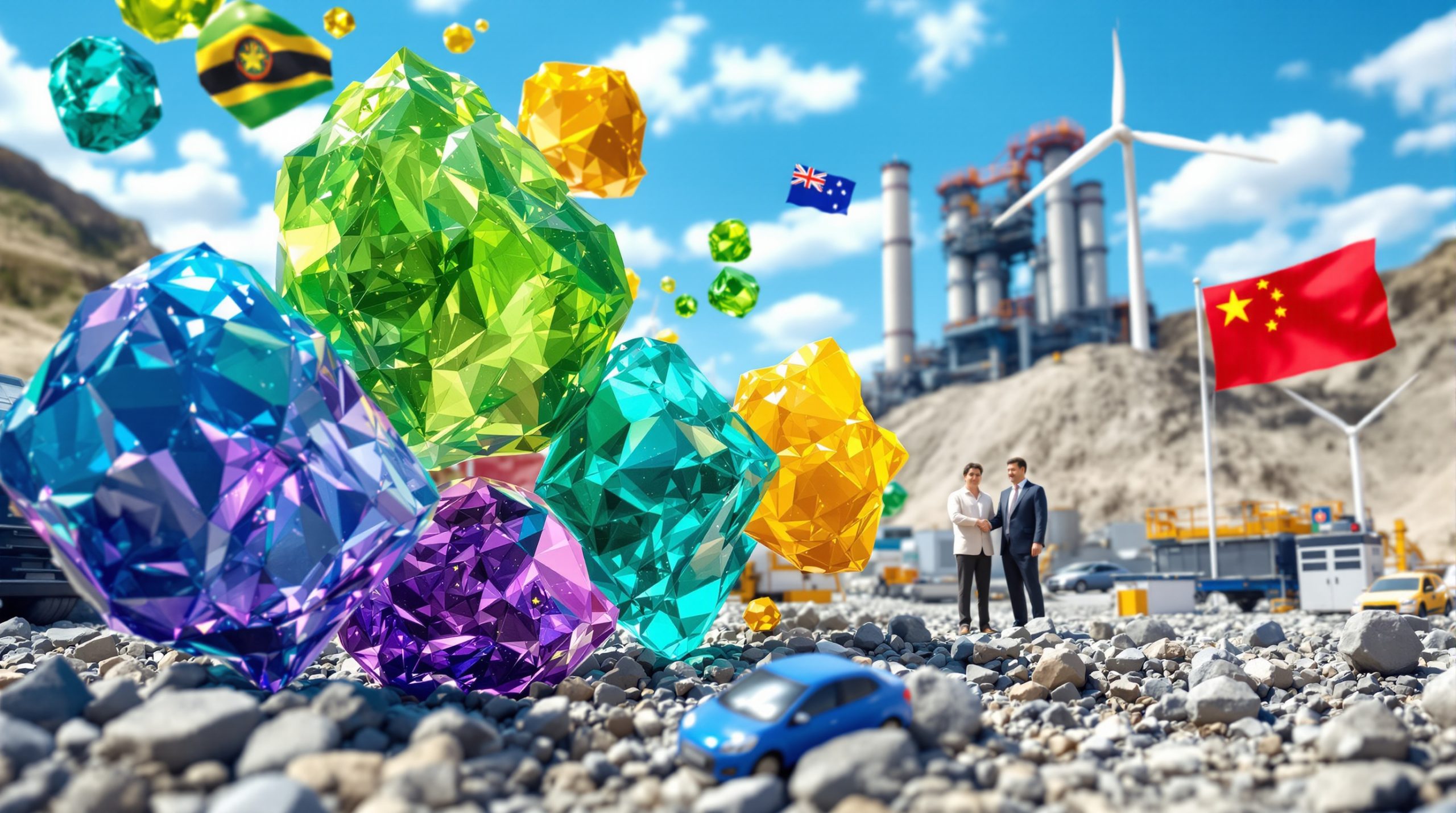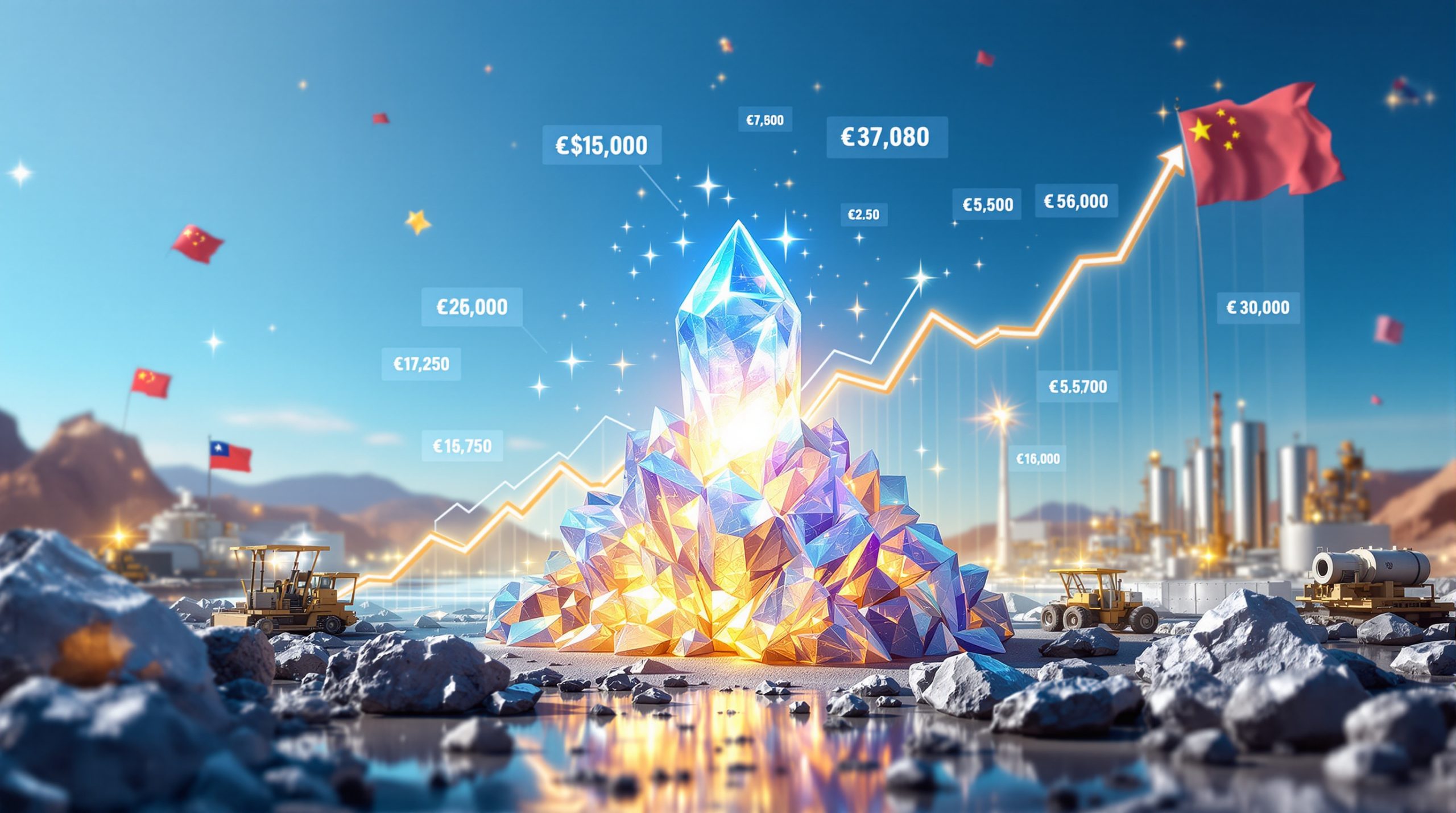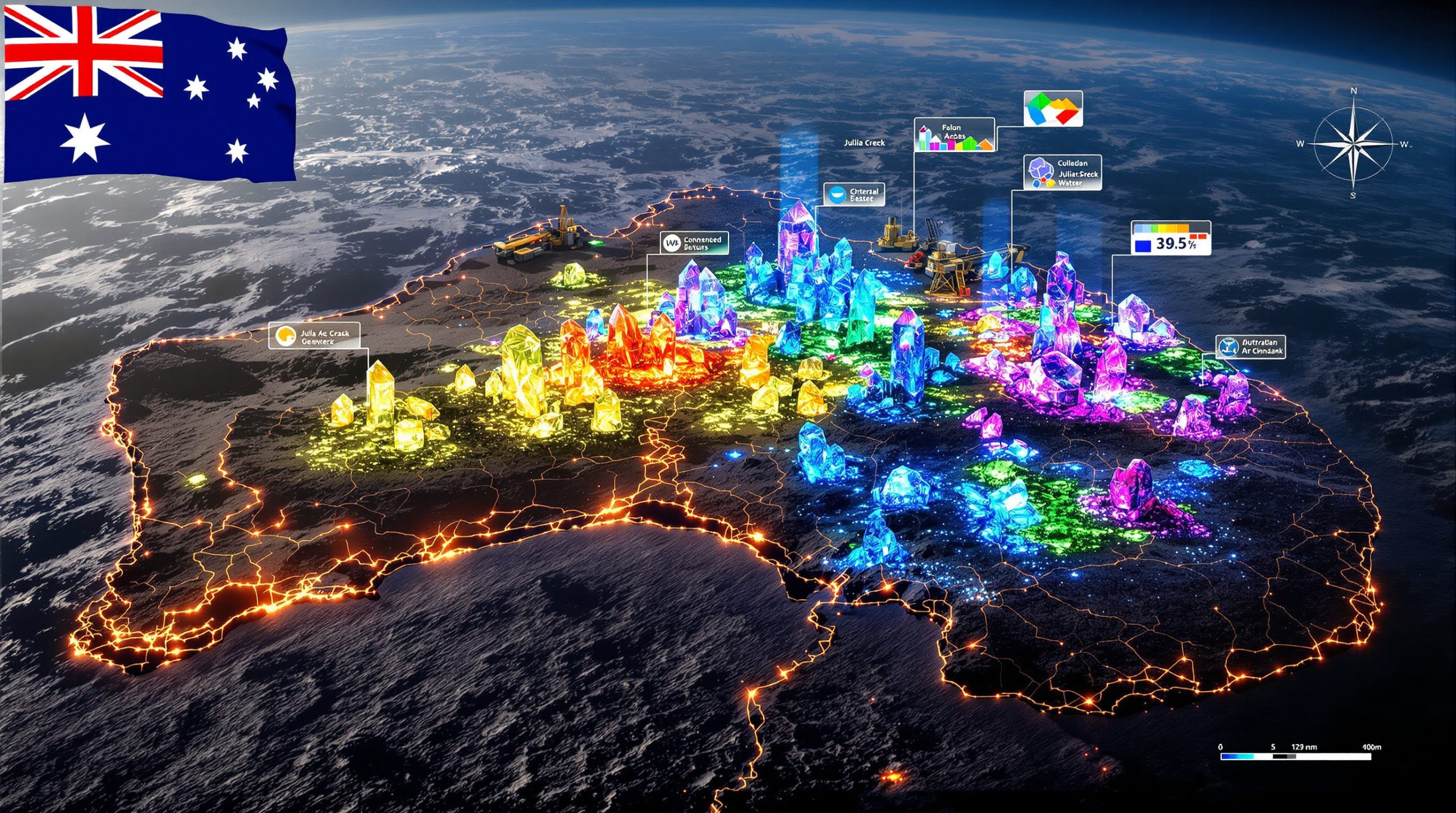How Are Trade Tariffs Affecting Iron Ore Markets?
Current Market Resilience and Recent Weakness
Iron ore markets have largely absorbed the impact of global trade tariffs, with Australian exports to China remaining stable despite geopolitical uncertainties. Dan Sullivan notes that tariffs have created a "risk-off sentiment across most commodity markets," though gold represents a notable exception. The direct effect on Australia-U.S. trade remains minimal, as over 80% of Australian iron ore shipments target Chinese steel mills. However, iron ore volatility insights has intensified since Q1 2025, with the Platts IODEX benchmark fluctuating between $98-$112/tonne – a 14% swing compared to the 8% range observed in 2024.
China Demand Outlook and Economic Slowdown
China's economic deceleration from historical 8-10% GDP growth to 4-5% levels directly impacts iron ore and trade tariffs consumption patterns. Ben Richards highlights that Chinese steel production has plateaued at 1.05 billion tonnes annually, with inventory-to-sales ratios in construction sectors rising to 1.8 months – the highest since 2019. The $90/tonne price floor remains critical, as demonstrated during the March 2025 price correction when Chinese domestic producers idled 12% of capacity, creating immediate supply tightness.
What Is the Supply Outlook for Iron Ore?
New Supply Concerns
The Simandou project in Guinea, slated to produce 100 million tonnes annually by 2027, represents the largest single supply threat to incumbent producers. Combined with incremental expansions in Western Australia's Pilbara region, global seaborne supply could increase by 4.2% annually through 2030. However, Sullivan emphasizes that these developments primarily threaten higher-cost producers operating above the $75/tonne cash cost threshold, rather than market leaders like Rio Tinto ($30.50/tonne) or Vale ($33.80/tonne).
Cost Position of Major Producers
Australian miners maintain a 15-20% cost advantage over global peers, enabling profitability even at sub-$80/tonne prices. Fortescue's decarbonization initiatives have reduced operational costs by 9% since 2023, while BHP's autonomous haulage systems improved yield efficiency to 62.1% – a 3.4 percentage point gain. This structural advantage insulates majors from cyclical downturns, with Richards noting that "equity prices currently discount iron ore at $72/tonne despite spot prices above $100".
How Are Iron Ore Stocks Positioned in Investment Portfolios?
Defensive Characteristics
Iron ore equities offer dividend yields averaging 6.8%, outperforming the ASX 200's 4.2% yield. Free cash flow margins remain robust at 38-42% for top producers, compared to 22-25% for diversified miners. Sullivan observes that these stocks provide "relative stability compared to volatile commodities like lithium," with 90-day price volatility measures 30% lower than battery metal peers.
Portfolio Positioning
Institutional investors have increased iron ore exposure to 8.9% of resource portfolios – the highest since 2021 – as a hedge against recession risks. Richards highlights Stanmore Resources (SMR) as a tactical play, with its Bowen Basin metcoal assets trading at 4.1x EV/EBITDA versus the sector's 6.8x average. The sector's 0.78 beta to broader markets reinforces its defensive characteristics during periods of macroeconomic uncertainty. For newcomers to the sector, a comprehensive mining stocks guide can provide valuable insights.
How Does Copper Compare to Iron Ore in the Current Market?
Copper's Recent Performance
Copper's Q1 2025 rally to $4.38/lb reflected speculative positioning rather than fundamental demand, with LME warehouse stocks increasing 17% during the price surge. The subsequent correction to $3.92/lb aligned with China's refined copper imports slowing to 480,000 tonnes in March – 15% below 2024 averages. Richards notes that negative treatment charges (-$15/tonne) signal concentrate shortages, creating opportunities for juniors with high-grade deposits.
Long-Term Copper Outlook
Electrification trends underpin copper's structural deficit, projected to reach 8.4 million tonnes annually by 2030. Major acquisitions like BHP's $10.6 billion bid for OZ Minerals highlight the strategic race for Tier-1 assets. Sullivan predicts copper market dynamics could reach $7-15/lb by 2035 as decarbonization accelerates, with EVs alone requiring 5.5 million tonnes annually – triple 2025 levels.
What's the Outlook for Coal in a Changing Energy Landscape?
Thermal Coal Considerations
High-grade Australian thermal coal (6,000 kcal/kg) maintains a 12% emissions advantage over Indonesian alternatives, supporting its $128/tonne premium. New Hope Coal's recent $2.4 billion share buyback reflects confidence in sustained Asian demand, particularly from Japan's 45 GW coal-fired fleet.
Metallurgical Coal Dynamics
The metcoal market faces a 22 million tonne supply gap through 2027, driven by Indian steel capacity expansions. Richards identifies Stanmore Resources' acquisition of BHP's Daunia mine as transformational, boosting production capacity to 18 million tonnes annually. Understanding coal market challenges is crucial for investors in this sector.
What Alternative Resource Investments Should Investors Consider?
"Picks and Shovels" Approach
RPM Global's mining software solutions now support 73% of ASX-listed miners, with recurring revenue growing 29% YoY. Imdex's cloud-based drilling analytics platform has secured contracts with 14 major gold producers, driving 41% EBITDA margin expansion.
Vale as an Alternative Iron Ore Play
Vale's Brazilian operations produce 67.2% Fe content ore versus Australia's 62.4% average, commanding a $12/tonne premium. Trading at 5.2x forward earnings versus Australian peers' 7.8x, Vale offers 15% FCF yield potential in stable price environments. For broader context, investors should consider global commodities insights when evaluating iron ore and other resource investments.
FAQ About Iron Ore and Trade Tariffs
How are Australian iron ore producers positioned against global competitors?
Australian majors operate at the base of the global cost curve, with all-in sustaining costs 38% below Chinese domestic producers. This advantage enables profitability across market cycles, with Richards noting "even at $70/tonne, BHP's WA operations remain cash-positive".
What impact might the Simandou project have on global iron ore markets?
Simandou's phase-one production could displace 45 million tonnes of high-cost Chinese domestic output by 2028, potentially lowering the global cost curve by $7/tonne. However, Sullivan emphasizes that "Australian producers' rail and port infrastructure provide unassailable logistics advantages". According to recent market analysis, such infrastructure advantages remain a key factor in Australian resilience.
How closely is iron ore demand tied to Chinese economic performance?
Each 1% change in Chinese GDP growth correlates with 22 million tonnes of annual iron ore demand fluctuation. With property sector exposure comprising 38% of steel demand, recent construction starts (-19% YoY) pose significant downside risks. Chinese trade policies continue to shape global iron ore and trade tariffs dynamics.
What is the relationship between iron ore prices and Chinese domestic production?
The $90/tonne price floor reflects the break-even point for 60% of Chinese domestic miners. Below this threshold, production curtailments typically create 3-5 month supply gaps, as seen during the 2022 and 2024 market corrections.
Want to Catch the Next Major Mineral Discovery?
Discovery Alert's proprietary Discovery IQ model delivers instant notifications on significant ASX mineral discoveries, turning complex market data into actionable investment opportunities for both short-term traders and long-term investors. Explore why historic discoveries generate substantial returns by visiting Discovery Alert's dedicated discoveries page and begin your 30-day free trial today.




